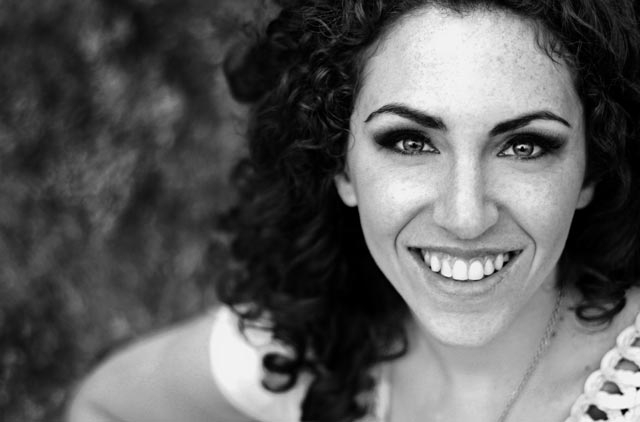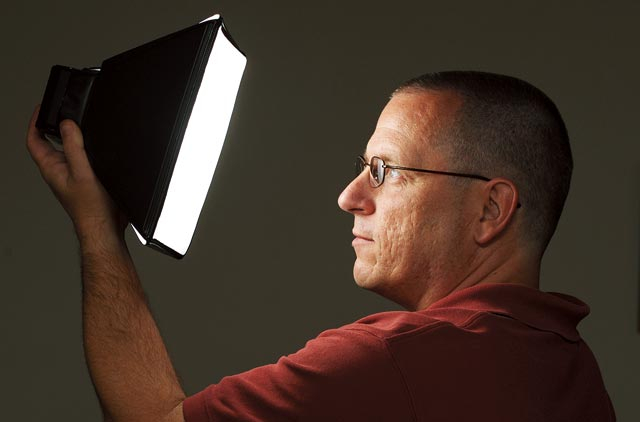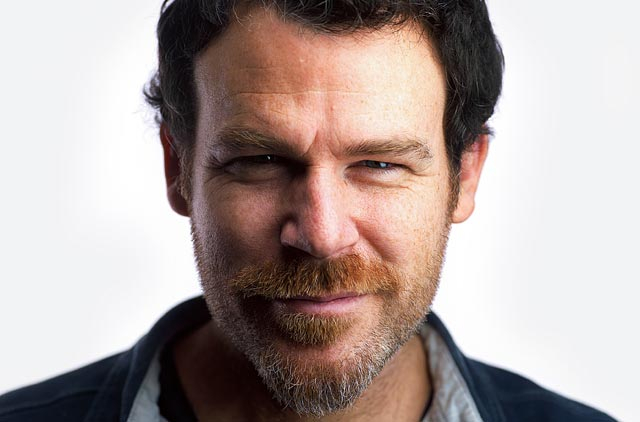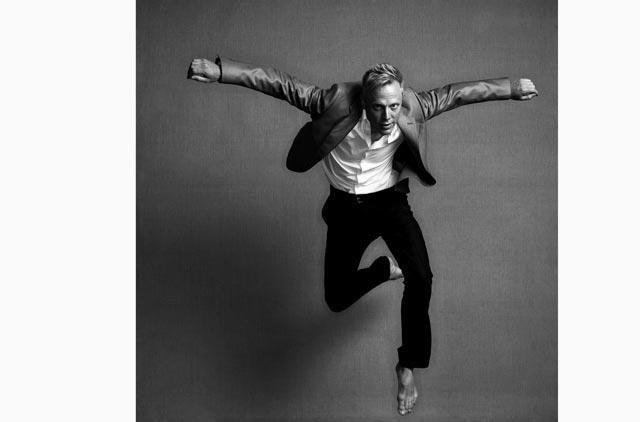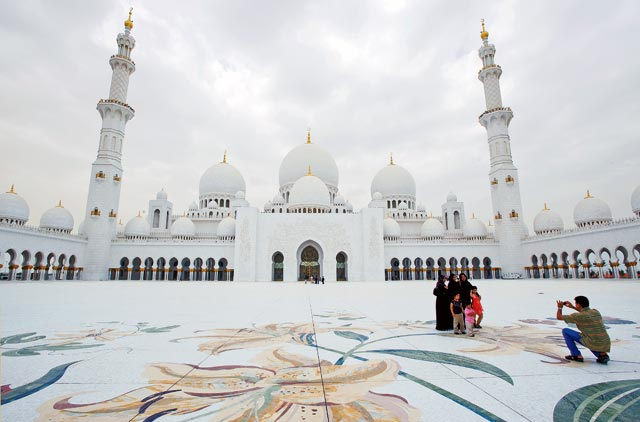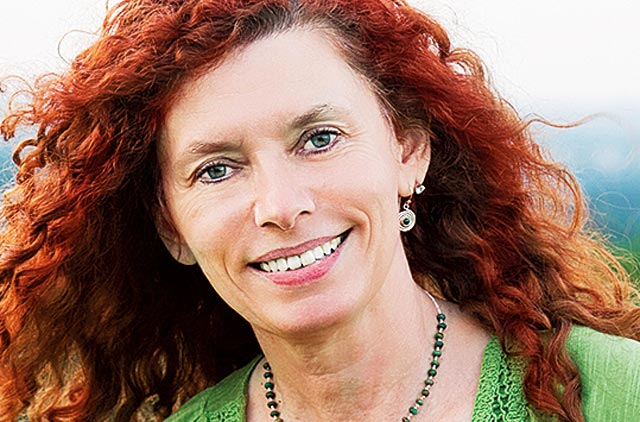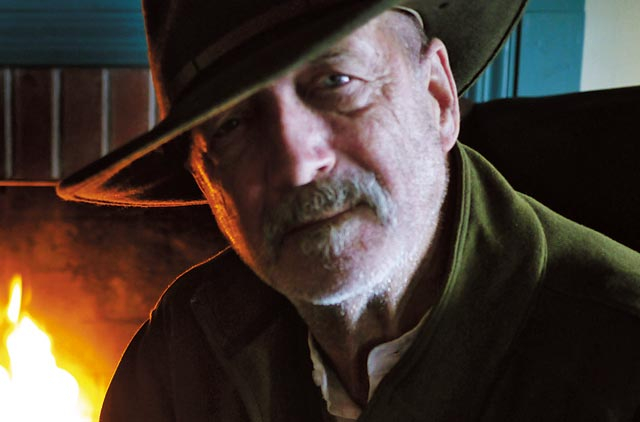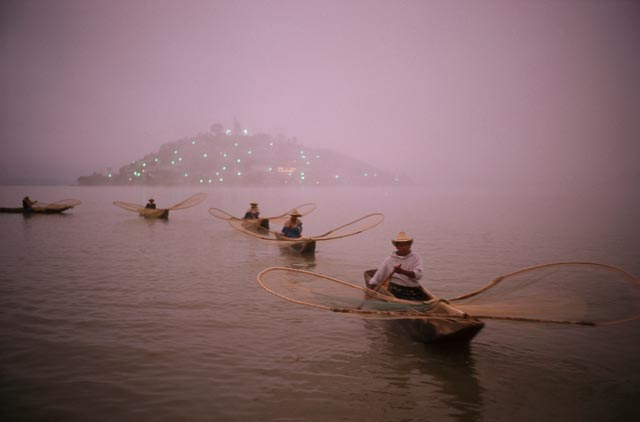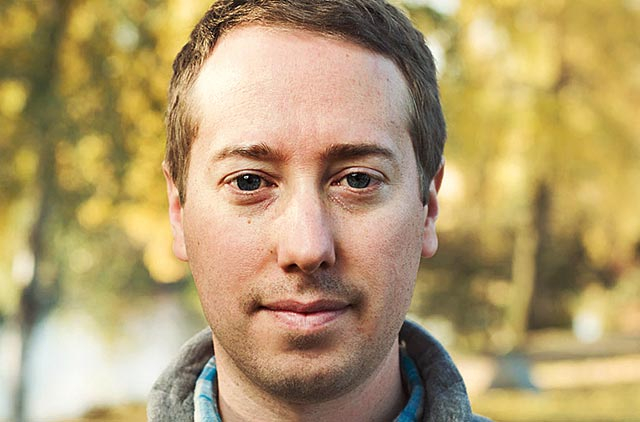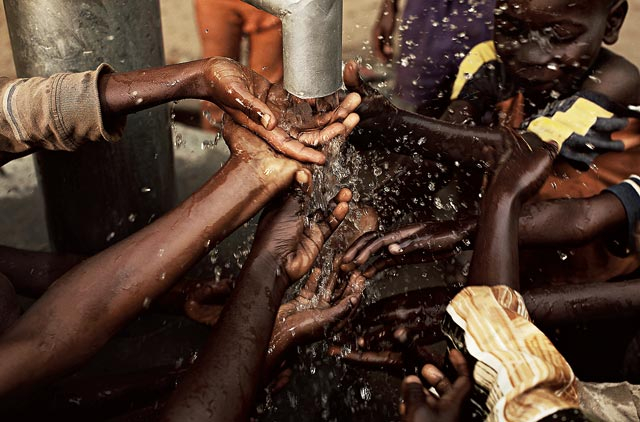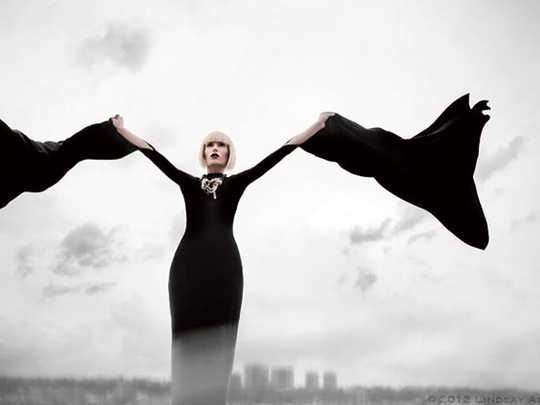
Bobbi Lane
Bobbi is an award-winning American commercial and portrait photographer whose clients include Warner Bros, Samsung, Neutrogena, and toy firm Mattel. While she loves capturing people, she was desperate to capture the beauty of the Shaikh Zayed Grand Mosque in Abu Dhabi during a recent visit. “The architecture, design and craftsmanship are at such an exemplary level, it was a bit overwhelming,” she says. “Once I had some time to adjust and stop gawking at the grandeur, I was immersed in the serenity and reverence - the essence of the Mosque.
“Trying to capture the spirit of a place is always a challenge and there were many opportunities and options to do that. I quite often just stop and absorb my location before I start to photograph. That way I’m more centered and aware of the feeling I want to capture instead of just taking “point and shoot” snapshots.
“ The light outside the mosque was slightly overcast, so with all the white marble and the light sky, there wasn’t much contrast. That turned out to be a benefit since there was no problem with losing detail, and it allowed me to make the contrast I desired.’’
The one photo you would like to shoot?
Of the earth from space, showing that we are all here together now on this beautiful planet.
Five basic tips for photographers?
1. Practice, practice, practice! Shoot as much as you can, it’s the only way to improve.
2. Exercise your creative powers by meeting other photographers, artists, writers, musicians, designers, actors, sculptors, etc. Being a good craftsperson is not enough, you must have the ideas to match. Develop your style, your unique way of seeing, but be flexible, too.
3. Very few photographers become successful without a solid understanding of business. Develop your business plan, identify and know your market and competition, understand pricing and usage, how to do excellent marketing and learn how to sell. Set up your bookkeeping and hire a good accountant that understands small creative businesses. Make sure you have a great website, beautifully designed cards and strong portfolio. Without a plan, you just wander. Don’t count on getting lucky!
4. The best jobs are the ones that come from personal recommendations. People like to work with people they like so join professional organisations, like Art Directors Clubs, in addition to photography groups. These clubs are very social and normally they do some charity work, so volunteer your time for good causes.
5. Actively seek to fill your life with people, things, places and activities that enlighten, inspire and motivate you. Part of this is taking good care of your body, mind and spirit. Stay fresh and take classes and photo workshops to keep current. Take time for yourself to stay centered.
David Alan Harvey
Everyday life fascinates David Alan Harvey and his mission is to transform ordinary encounters into extraordinary pictures.
Born in San Francisco, David, 68, has shot 40 essays for National Geographic and is the founder of Burn Magazine, an award-winning online journal for emerging photographers. He also publishes BurnBooks, a press specialising in limited edition art books.
“The feel of my pictures comes from being totally in tune with the subject. I can sense when something is about to “happen”. For me something “happening” could be just a small gesture, like a hand in the right place for a split second. It is the small movements that make the big difference.’’ Being in the right place is also key – he had the perfect angle when he spotted these wild horses (below) during a trip to Spain. “They were wild horses and I captured them when they reared up while being rounded up,’’ he says.
Your tips for amateur photographers?
First, use a simple camera. You don’t need a really expensive camera; one lens is all you need for 99 per cent of what most will ever do. Many people think if they buy a super camera they will take super pictures… not true! I took pictures with my phone camera for my last book – (based on a true story) (2012, BurnBooks)!
If you think too much about your equipment you will miss the picture. Your camera should feel like part of your body, an extension of you.
Find subjects you care about, be passionate with your work, study all of the other arts, read a lot, think a lot, study light, study painting, listen to music. Love making photographs for the fun of it! If you are not having fun, you are not working.
Lindsay Adler
New York-based portrait and fashion photographer Lindsay, 28, has developed her particular style of photography – using techniques to add to her talent. A regular contributer to a variety of major photography magazines including Professional Photographer, and Rangefinder Magazine, she explains: “Fashion photography is my opportunity to take the fantasies and visions in my head and turn them into a reality. It’s about surreal perfection – the locations are luxurious, the clothing avant garde and in the end everything comes together to create a beautiful fantasy. I use the tools in my photographic tool kit, including Photoshop, to enhance reality and create a striking visual environment.’’
What part does technique play in achieving the surreal effect?
The fantasy in my images is partially from concept and partially from technique. The fantasy could be a model wearing a dress with endless yards of fabric, or the model’s avant garde make-up. Often, my techniques of lighting and use of Photoshop enhance the effects… perhaps by turning a bed of flowers into a luscious red carpet, or I mirror an environment to create surreal symmetry.
Your advice to fashion photographers
Don’t be afraid to ask top people to work with you. As you build your portfolio, ask models to shoot with you. Ask professional hair stylist and make-up artists to collaborate. Ask stunning locations for permission to shoot there. Ask your idols for advice. Ask shops if you can borrow clothing and props. Ask people to feature or publish you. When you ask, you open up many opportunities that would not have existed others, and that may change your life and your career! Force yourself to shoot all the time, at least once a week. That way you can experiment, and make mistakes, but you’ll also create beautiful images. The more you shoot, the more you grow creatively and start to discover your style and vision.
David Hobby
A photojournalist who specialises in portraits, David has a blog – Strobist.com – that has educated hundreds of thousands of photographers on lighting and the latest in equipment related to photography. This Baltimore-based photographer has been conducting workshops all over the world and is the author of two highly successful DVDs on lighting.
What is more important – technique or an artistic eye?
I think you have to have both. One supports the other. That said, I think technique is easier to learn than would be an “artistic eye.”
Photographically speaking, what attracts you to Dubai?
It’s my fifth time to Gulf Photo Plus and I must say Dubai never fails to impress. It’s a world-class destination for photographers.
The architecture, of course, is top-tier – pun intended – and arguably the most visually exciting in the world. But I am also attracted to the mix of cultures here... it’s like visiting many countries just by visiting one city.
Your tips to amateurs
First, simplify. Less is more. If something in the frame isn’t helping your photo, it’s hurting your photo. Get rid of it.
Learn to find interesting, simple environments for your portraits. Look around and you’ll find them everywhere.
Learn to recognise and exploit elegant light – which highlights the best features of your subject. And once you can recognise it – through trial and error – you can easily learn to create it. Once you have done all of the above, get all of that stuff out of your mind and concentrate on the interpersonal experience between photographer and subject. After all, this is what you are recording with your camera. Remember, you are after one great moment that might not last longer than a 250th of a second. Work towards it, and be ready to grab it.
Lastly, allow your camera to be your personal invitation to interesting places and new experiences. Just letting go and being open to new experiences as a photographer is a learned technique, just like f/stops and shutter speeds.
Peter Hurley
A member of the US sailing team, a model and a professional photographer, New York-based Peter Hurley is certainly an adventurer. He shoots for Levi’s and Reebok but is intrigued by the human face, which is why he loves taking unusual portraits. Peter’s a talented teacher, helping students learn not only the craft of portrait photography, but all the subtleties that go into composing a compelling photo.
Why did you move from being in front of the camera to behind it?
While I was modelling, I became good friends with a handful of photographers, and I always thought they had a really cool job. I was always intrigued by photography and the biggest push for me came from renowned fashion photographer Bruce Weber. I’d shot my first campaign, Polo Sport, with him. He helped with my modelling career but after a few years he began telling me I should pick up a camera.
I finally listened to him and began photographing my friends who were modelling with me at the time. The agents loved the photographs and I was hooked, so I left modelling. I think the experience in front of the camera and working with professional photographers gave me an inside look into a world that I would never have seen otherwise. It wasn’t about the technical knowledge, but an awareness of what the top of the industry is like and how far I’d need to go to get there.
You’ve gone from sailing to modelling to photography...
It’s funny, modelling was a by-product of sailing and photography became a by-product of modelling, so I’ve always been passionate about all three. However, I feel like modelling was just a stop along the way. It gave me an incredible experience and guided me towards picking up a camera, but my real passions in life are definitely photography and sailing.
Head shots have a science all of their own. How important is holding a pose?
Honestly, I can’t stand the word pose. I guess it comes from my modelling background where models are, at times, posed in order to create a certain image. I’ve never felt like I’ve posed anyone while I was photographing them, the word just seems too stiff for me. I do think it’s of utmost importance to position people properly for a photograph, but I favour positions that aren’t too concocted and tend to emulate real life. I love simplicity. I think cameras make people look stiff and almost robotic, so I always try to let the subject find their own way with their body while I guide them along. That way, they’ll always look more realistic.
Why do you love shooting portraits and head shots?
For as long as I can remember I’ve been intrigued by the human face. I think that one of the most incredible things in life is the fact that we all look so unique. I’ve always been drawn to faces, and living in a city with millions makes my walk to work each day extraordinary. I’ve always been intrigued by passers-by as I wonder what it would be like to photograph them. Capturing their features in an interesting way and capturing true human expression is the key for me. I can’t tell you how many times I’ve walked right by the most incredible landscape and not even realised there is a picture there, but put a person in front of it and I’m in business.
Do you have any top tips for shooting portraits?
Since the sun is the single most important source of light, my top tips would have to revolve around getting to know it.
Start by checking out faces of passers-by in your normal daily routine. Look for things that inspire you when direct sunlight hits the face or when indirect light is illuminating them. Start to determine what you like about the kind of light that is shaping someone’s face. Are you into shadows or do you like the look of soft indirect light? Experiment with different kinds of natural light from harsh to soft, and begin to shape it with diffusion and reflectors.
Once you’ve nailed down a look with natural light and you know how to shape it to your liking, you can try to emulate that with strobe or constant light.
One of my favourite things to do is mix natural light with artificial light. Finding a balance between the two is a great way to add depth to your images.
John Keatley
In his quest for the perfect picture, John Keatley has gone to extremes – he’s climbed trees, skied down mountains, and even buried people in kitty litter. Blessed with a knack for making even the most camera-shy person relax, he counts Samsung, Microsoft, MSN and Starbucks among his clients. He’s even had the opportunity to photograph celebrated photographer Annie Leibovitz and Sarah Palin. He has also been recognised in photography circles for his work in Liberia.
“I look at nature or environment in my portraits as a subject on its own. The human subject needs to work or flow with the environment I place them in, but it has a life all of its own, which is exciting to experiment with.
“I often look for wide-open spaces, which I feel gives my work a sense of intrigue and grandness. There is something about an open landscape that takes us out of our comfort zone. Nature helps me set a mood to my portraits and I love that you never know exactly what you are going to get when dealing with nature.’’
Tell us about your Liberia experience?
I’ll never forget my trip to Liberia in 2011, and the people I met there who made a lasting impact on my life. Liberia is a beautiful country, but one with some serious problems including lack of clean water. The company I was shooting for on this trip was there to build two wells.
My primary goal was to photograph the construction process as well as show the health problems with the contaminated wells most people are drinking from. I also began to wander around and photograph children. I am proud of the portraits I created on that trip, and they continue to be some of my favourite images. Through my blog and social media, I have been able to tell the stories of some of the children I photographed, as well as help raise awareness and funding.
And your Annie Leibovitz picture?
My goal was to create one great portrait. It was an opportunity that does not come around very often, and I wanted to make the most of it. I knew there would not be much time with her, so I decided to focus on shooting a portrait up close. I wanted to create something honest and vulnerable, and being very intentional and up close helped achieve that. I asked her to take her glasses off, which is not something we often see her do, but she agreed, and I feel like that really helped open her up a bit. That very direct eye contact really draws the viewer in.
Your tips to amateur photographers on portrait photography
Cut out the clutter. Focus on what you feel is important, and if anything hinders that, do what you can to hide or move it out of your frame.
Practise, practise, practise. It is so important to shoot, learn, and adapt. Trust to your instincts. The only thing that will make your portraits unique or interesting is your vision. Take time to plan and produce your portraits. The extra time and thought you put in will make all the difference.
Take time to be inspired. Look around you. Study the greats. Keep a journal of thoughts and ideas. Let your inspiration flow into your portraits.


